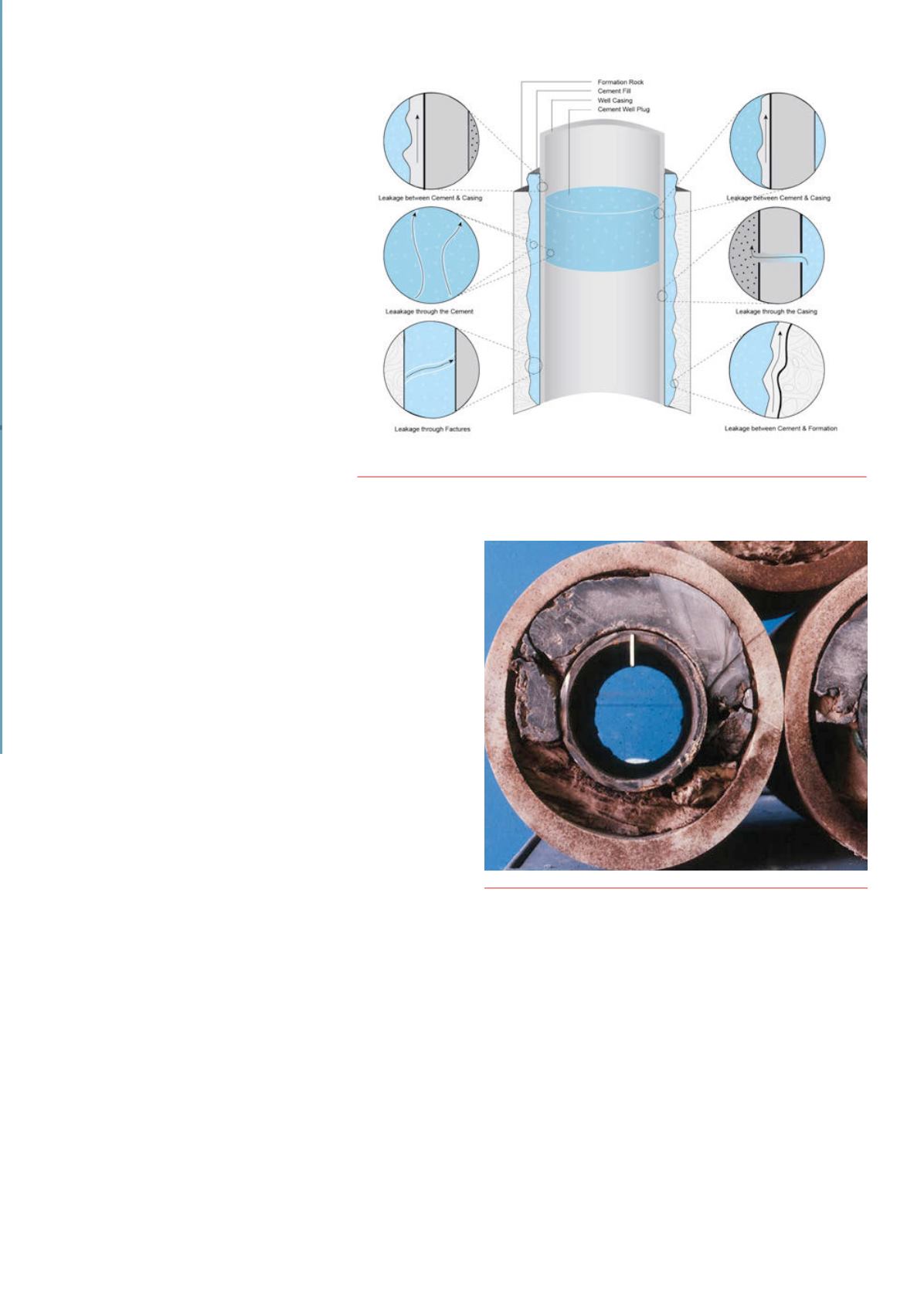
January 2016
Oilfield Technology
|
49
Definingtheproblem
Gas migration may occur when formation
pressure is higher than annular pressure
(Figure 1). This problem can lead to an
uncontrolled release of hydrocarbons to surface.
Contributing factors such as poor mud filter cake
removal, premature gelation and inadequate
interfacial bonding can allow gas to migrate
through the cement sheath or micro-annulus.
The company provides a solution for the
premature gelation which can occur during
extensive nonproductive time (NPT) during
rig up of conventional cementing equipment.
During this time period, circulation is stopped
and gelation of thixotropic drilling fluids can
occur, leading to fluid channelling and cement
losses (Figure 2).
Another negative effect of early gelation is
that it causes the slurry to become load bearing.
When part or the entire cement column becomes
load bearing, hydrostatic pressure loss can
occur, resulting in an underbalanced annulus,
which allows for early gas migration.
Often, a potential problem with cement
integrity is poor casing placement. In a perfect
scenario, casing would be perfectly centred in the
annulus in both static and dynamic states. The measure of casing
centralisation in the annulus is called stand-off (Figure 4). Due to
irregularities or tortuosity of the wellbore, pipe is not properly
centred and requires centralisers to increase stand-off. When casing
lies against the side of the wellbore, it can significantly impact the
flow of cement around the casing and create irregular cement wall
thickness (Figure 5).
Proposingthesolution
Dynamic cementation is accomplished by rotating and reciprocating
the casing while cement is being pumped. The continuous pipe
movement increases the effective volume of drilling fluid moving
in the annulus. The additional continuous movement reduces
the surface tension between the drilling fluids and the casing and
between the drilling fluids and the formation wall. It also helps
to break up cutting bridges that can occur and allows for drilling
cuttings and drilling fluids to be pumped more easily out of the
wellbore.
Continuous rotation of the casing string reduces the effects
of early gelation, ensuring an overbalanced annulus, thereby
mitigating early gas migration. To make continuous rotation
possible, the cement swivel is placed between the casing running
tool (CRT) and the top drive. The cement swivel performs the
same function as a conventional cement head, except it has the
additional benefit of allowing an operator to commence cementing
operations almost immediately after the casing has been run. This
saves the rig hours of time that traditionally would have been spent
rigging up a conventional cement head system. As the cement
swivel is fully rigged up to the CRT, the casing drive system (CDS),
before arrival on site, there is no additional rig up time required
for the sub (Figure 6). An anti-rotating bracket (ARB) is used to
hold the swivel body secure and prevent rotation of the sub during
operation. The cement line from the pump truck is connected to the
side-entry port of the cement swivel.
Rotation of casing also ensures the cement is circulated
completely around the casing, thus reducing the chances for thin
cement sections and leading to better zonal isolation. Casing
movement and good centralisation leads to the ultimate goal of
properly centralised casing with full circumferential cementing
(Figure 3).
Casestudiesand industryacceptance
Casestudyone
Canacol Energy, in conjunction with Tesco Corporation, has
performed a number cementing jobs using dynamic cementation
techniques. These joint projects were performed in Colombia
Figure 1.
This graphic demonstrates the variousways inwhich fluid or gasmigration can occur
as a result of an inadequate cement job.
Figure 2.
A cross section of casingand cement after a trial operation is
performedwithout rotationduring cementation. It is clear that almost
40%of themud in the annuluswas not displaceddue to gel strength
anddehydration. Rotationduring cementationwould have kept the
mudmovingby exertingmechanical energy downhole to break the gel
strength.


